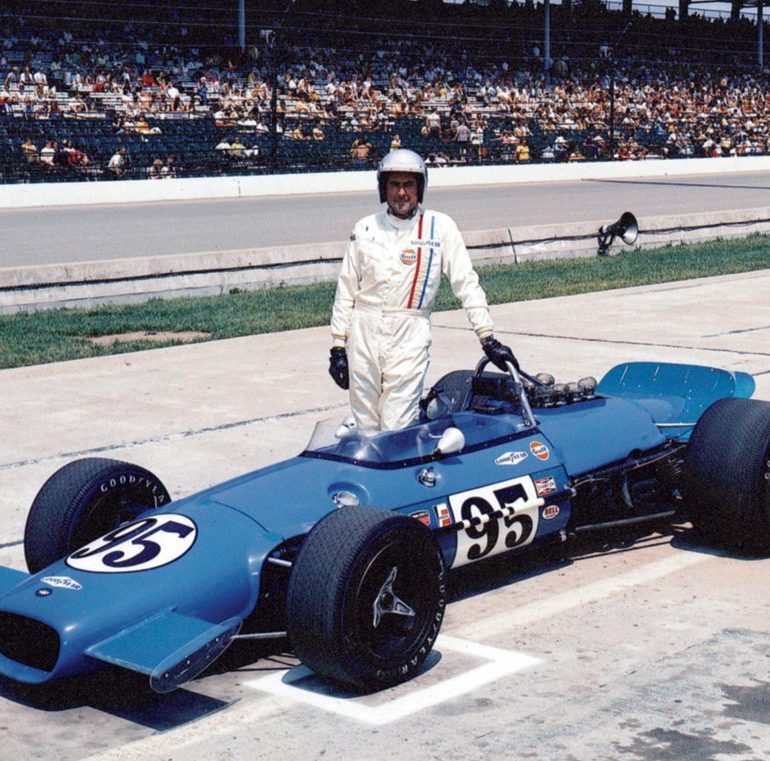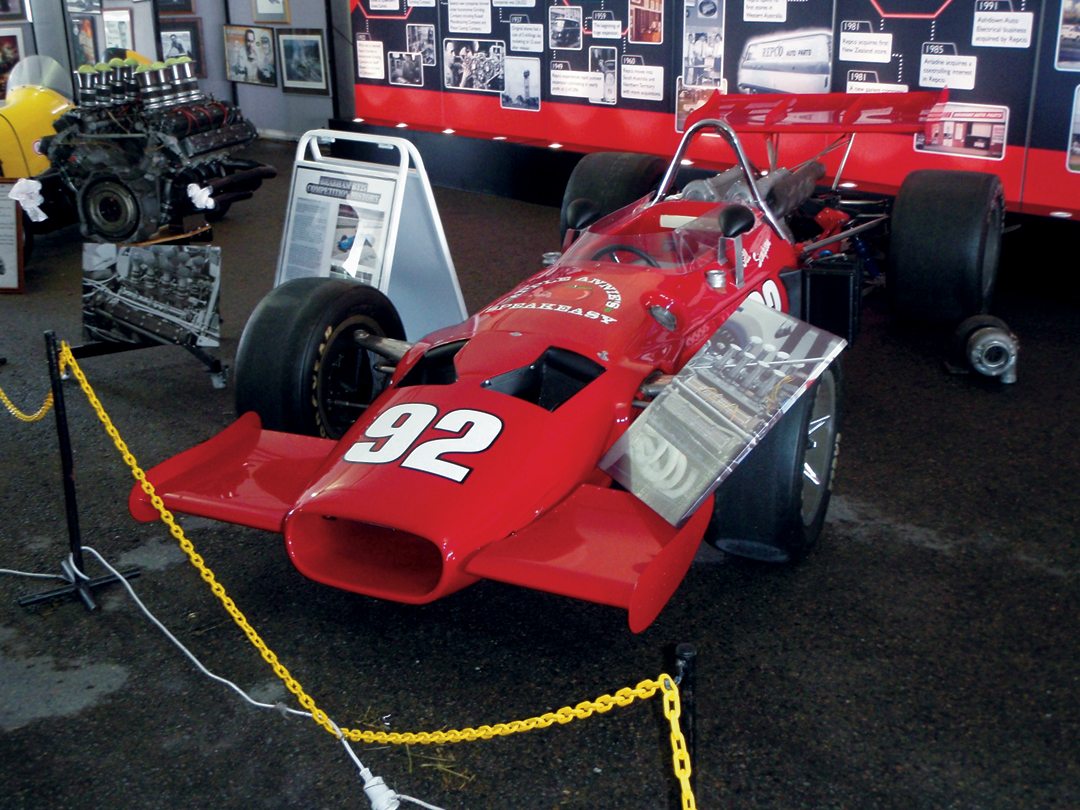Brabham BT25/2
Deep inside Hunter Valley Wine Country of New South Wales (NSW) lives a very interesting automotive treasure-seeker. By day Aaron Lewis is CEO of the Rover Coaches bus company, a business that has been in continuous operation in Cessnock, NSW for more than 85 years. At night, when the valley is peaceful and serene, Lewis is scanning the globe for his next great find.
By his own account, Lewis grew up encircled by cars. His father was a mechanic and the family always seemed to have at least one Jaguar to keep him busy. Lewis’ earliest cars were of the slot and Matchbox variety. The wee D-Type and GT40 were his obvious favorites. Of course growing up in the ’60s meant Australia had its very own three-time World Champion in the form of “Black Jack,” now Sir Jack Brabham. Lewis said, “You can’t underestimate the impression that has on a young boy. I saw Jackie Stewart beat Jim Clark at the Australian Grand Prix at Warwick Farm Raceway in 1967. Frank Gardner finished 3rd and Brabham came home 4th. That was the first time I saw big-name drivers racing.”
Lewis bought his first classic car in 1983; a 1969 Series II E-Type Jag Roadster he still owns. His competitive racing career began in 1983 racing his E-Type and his father’s Jag 2+2 in hillclimbs and sprints. Beginning in 1992 he competed in the first six Targa Tasmania events in the E-Type. And all along the way Lewis has continued to hunt and accumulate racing machinery. In 1996 Lewis and his father found a 1972 V12 E-Type Modsports racing car. This was followed by a 1974 Elfin MS7. He’s also owned a 1978 Elfin MR8 F5000 and a 1972 Graduate M8F.
Lewis’ current collection includes the ex-Johnny Rutherford 1966 AAR Gurney Eagle Mark 2, the ex-Bobby Unser 1967 AAR Gurney Eagle Mark 3 (which he purchased from A.J. Watson), a 1972 AAR Gurney Eagle 7200, a 1972 Matich A50 F5000, the ex-Peter Revson 1972 McLaren M16B, the ex-Revson 1973 McLaren M16C and a 1973 Chevron B24 F5000.
Lewis said, “I’m passionate about historic racing. I like the people, the hunt for missing cars and the opportunity to race some very fast equipment. At one stage I held nine various lap records. I keep track of the market, but mostly I’m looking for cars I want to race. I like to get a car track ready, race it for a period and then sell it, but only to someone capable and willing to keep it on the track. I think unused cars are a bit sad.”
There’s nothing sad about Lewis’ most recent acquisition, the 1968 Brabham BT25/2 that looped The Brickyard five years in a row, starting in 1968. According to Lewis, “Everyone thought this car had disappeared as it hadn’t been seen on track since the ’74 California 500. When I bought the ex-Revson McLaren M16B, I contacted John Martin because he’d also raced the car. During our conversation about the McLaren I casually asked him what had happened to the Brabham BT25 that was his first Indycar. His answer sort of stunned me, ‘Oh Bill Simpson’s got that. Would you like his cell number?’ It turned out that the car had undergone a superficial restoration by John Buttera and then had been hung upside down from the ceiling of Simpson’s shop in North Carolina. Simpson was the last one to race the car (’74 California 500) and sometime later purchased it from driver John Martin. In 2008 I made a deal to buy the car from Simpson and am still giddy to have gotten it. Someone always knows where old cars are. This one was hidden in plain view, as they say.”
Lewis has spent many moonlit valley evenings researching the race history of his Brabham. He’s documented five consecutive Indy 500 results: 1968, DNQ-Jack Brabham; 1969, qualified 29th (163.875 mph), finished 24th-Jack Brabham; 1970, rookie test-John Martin, DNQ-Dick Simon; 1971, DNQ-John Martin; 1972; qualified 14th (179.614 mph), finished 16th-John Martin.
Of course the car competed at other events. Most notably, Revson was the overall round winner in BT25/2 in 1969 at Indianapolis Raceway Park (IRP). At this point the car was motivated by a Repco-Brabham Indy engine. According to Lewis, only three of these all alloy quad-cam 4.2-liter V8s were ever built. And when Lewis acquired his car, the engine was long gone.
Lewis said, “Revie’s win at IRP was the last international win for a Repco-Brabham engine following their World Championships in ’66 and ’67. When I got the car, the next order of business was to find the original engine. This proved to be no easy task. What I now know is that the engine wound up in Dan Gurney’s shop where Pete Wiesmann was to collect it but never showed up. Gurney wanted his shop cleaned up and decided to throw away the engine and spares. Instead Jim Toensing, Gurney’s friend and a notable finder and restorer of important cars, took the engine to Briggs Cunningham’s collection where it sat for many years. The short story is that I wound up finding Toensing and the engine and was able to make a deal to reunite it with my car.”
BT25/2 is no longer hanging upside down in North Carolina. Instead, it’s in the hands of a true enthusiast and a qualified driver. Lewis is readying the car for its first track outing in more than 37 years and aims to make Jack Brabham proud. Lewis said, “Sir Jack raced four cars at the Indy 500. The famous Cooper T54 that turned the establishment on its head and the Tauranac-designed BT12, BT25, and BT32. The BT25 was the first Brabham monocoque designed by Tauranac, and predated the BT33 F1 car by two years. Many Brabhams were built, but few can claim to have had the great man himself as pilot as can BT25/2. Repco history is important down here and although this car had only limited success, it’s an icon of the time and an important piece of Brabham history.”





